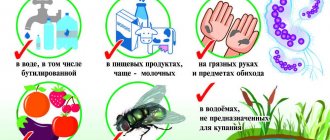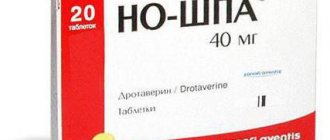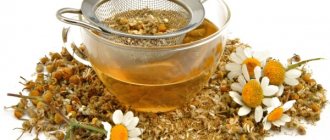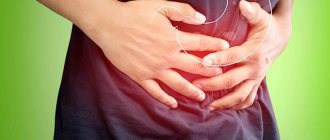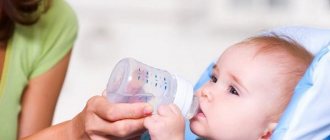Abdominal pain in children can have a variety of causes. There are pains caused by organic changes in the gastrointestinal tract. Abdominal pain can be caused by non-organic causes - these are functional disorders (colic in infants), psychosomatic pain, abdominal pain due to intolerance to any foods and, finally, abdominal pain that is not related to damage to the gastrointestinal tract (urinary tract infection , diabetes mellitus, enlarged mesenteric lymph nodes, spasm of mesenteric vessels, enlarged liver, spleen in hemoblastoses, and systemic diseases).
Abdominal pain associated with pathology of the gastrointestinal tract.
Acute abdomen is a state of catastrophe in the abdomen, characterized by severe pain, barely bearable, constant, aching or frequently recurring. This condition requires immediate medical attention!!! This picture is caused by appendicitis, cholecystitis, pancreatitis, suppuration of an ovarian cyst, bleeding into the abdominal cavity, intestinal obstruction, intussusception, peritonitis, and perforated gastric ulcer.
Alarm signals:
- Severe pain, the child cries and/or squirms;
- Persistence of pain for 2-4 hours, and even more so its increase;
- Feeling unwell, cold sweat, fainting;
- Confusion.
Before the doctor arrives, put the child to bed, do not disturb him or try to give him anything to eat or drink. REMEMBER: you cannot give painkillers (analgin, nurofen, paracetamol, efferalgan), offer the child a heating pad, an ice pack, laxatives, try to give an enema, all this can lead to a worsening of the child’s condition and, as they say, “blur the clinical picture,” thereby delay timely diagnosis and timely prescribed treatment.
Gastritis, stomach ulcer, gastroesophageal reflux. Gastritis is an inflammatory disease of the stomach wall, characterized by abdominal pain and dyspeptic disorders.
The etiological factor is often Helicobacter pylori infection.
Emotional lability (conflicts in the family, school, some kind of disaster, stressful situations), malnutrition, allergic processes predispose to the development of gastritis - all this leads to an increase in the acidity of gastric juice and creates favorable conditions for infection with the microbe Helicobacter pyloricus.
Most often, the pain syndrome is accompanied by dyspeptic disorders (nausea, belching, unstable stool, constipation). An important symptom is liver enlargement associated with stagnation of bile.
There are no symptoms of chronic intoxication and changes in other organs. Physical development corresponds to age. In some children, the main symptoms of the disease are liver enlargement without pain.
A good effect for improving well-being is provided by excluding too fatty, spicy, fried foods from the diet. The same applies to baked goods. Vegetable oil, on the contrary, increases bile secretion and is recommended to be consumed more often. If, in addition to the specified diet, you increase physical activity, this is often enough for recovery and well-being.
If diet and lifestyle changes are not enough, choleretic agents are used. Your doctor should recommend specific medications.
Enteritis, colitis (enterocolitis) is an inflammatory disease of the wall of the small and large intestines, characterized by abdominal pain and diarrhea syndrome.
Chronic colitis and enterocolitis are most often associated with acute infections. In this case, the pathogen that caused the disease has already lost its significance, and the dysfunction of the intestine is supported by those morphological changes that remain after the infection.
Types of stomach problems in children
A child may have abdominal pain for many reasons, including:
- Constipation. If it hurts your child to go to the toilet, it is probably due to constipation.
- Diarrhea is often caused by an infection that some call the "stomach flu." Doctors call this type infectious gastroenteritis diarrhea.
- An infection somewhere else in the body can cause pain. Sore throat, pneumonia, ear infections, or cough can sometimes cause stomach problems. Severe pain can also be caused by a urinary tract infection or a blocked bowel. Bacterial or parasite infection, heartburn, and irritable bowel disease can also cause pain.
- Food. Some people have pain because they ate too much food that was too spicy or fatty, ate food they are allergic to, or that was left in the refrigerator for too long. Pain is the body's way of telling you that the stomach and intestines have a difficult job breaking down or digesting this food. For example, some people are lactose intolerant, which means they have difficulty digesting lactose, a type of sugar found in milk and other dairy products.
- Appendicitis or other painful problems. If the pain starts in the belly button and then moves to the lower right side of the abdomen, it may be appendicitis. Fever or vomiting, as well as pain that gets worse and worse, and loss of appetite can also be signs of appendicitis.
- Stress. Many children (and adults too) have a "nervous stomach" where they feel anxious or self-conscious.
The child complains of pain in the upper abdomen.
Peptic ulcer of the stomach and duodenum is an inflammatory disease that occurs with ulcerations of the mucous membrane of the stomach and duodenum. The causes and predisposing factors are the same as for gastritis.
With gastritis and peptic ulcers, gastroesophageal reflux often occurs - acidic gastric juice enters the esophagus, which is manifested by belching, pain in the stomach after eating, and heartburn.
With peptic ulcers, these symptoms are more pronounced.
Alarm signals:
- Increased frequency and intensification of pain;
- Weight loss;
- Vomiting blood or coffee grounds.
In the treatment of gastritis and peptic ulcers, regular nutrition without overeating, the exclusion of irritating foods, the use of boiled, baked or lightly fried low-fat second courses, light dinners at least 2-3 hours before bedtime, the exclusion of sour juices and sweets are of great importance. The doctor prescribes an examination, diet and appropriate medications.
Diseases of the biliary system. Diseases of the biliary system in children, as a rule, are of microbial origin. Predisposing factors are a violation of the outflow of bile, which develops with dyskinesia of the biliary system.
Dyskenesia may be associated with dysfunction of the sphincter apparatus, blockage of the ducts or their compression. Subsequently, the presence of an inflammatory process in the ducts may be accompanied by a violation of the outflow of bile.
The contractility of the gallbladder is important.
The pain syndrome is usually accompanied by dyspeptic disorders (nausea, belching, unstable stool, constipation). An important symptom is liver enlargement associated with stagnation of bile.
There are no symptoms of chronic intoxication and changes in other organs. Physical development corresponds to age. In some children, the main symptoms of the disease are liver enlargement without pain.
A good effect for improving well-being is provided by excluding too fatty, spicy, fried foods from the diet. The same applies to baked goods. Vegetable oil, on the contrary, increases bile secretion and is recommended to be consumed more often. If, in addition to the specified diet, you increase physical activity, this is often enough for recovery and well-being.
If diet and lifestyle changes are not enough, choleretic agents are used. Your doctor should recommend specific medications.
Enteritis, colitis (enterocolitis) is an inflammatory disease of the wall of the small and large intestines, characterized by abdominal pain and diarrhea syndrome.
Chronic colitis and enterocolitis are most often associated with acute infections. In this case, the pathogen that caused the disease has already lost its significance, and the dysfunction of the intestine is supported by those morphological changes that remain after the infection.
The main clinical symptoms are abdominal pain, bloating and rumbling, impaired intestinal motility (constipation, diarrhea, or diarrhea alternating with constipation). Pain may be absent during the period of remission of the disease, but dysfunction of the intestines remains, which requires restorative treatment.
In addition, increased irritability, tearfulness, depressed mood, vascular dystonia syndrome, and a tendency to smooth muscle spasms are typical for these patients.
Rehabilitation consists of organizing nutrition according to the ability to absorb food, psychotherapy, the use of physiotherapeutic influences, and the use of astringents, enveloping, and absorbent agents. Recommendations on nutrition, daily routine, and medications can only be given by a doctor.
Inorganic causes of abdominal pain.
Functional pain (colic in infants). Colic is paroxysmal pain in the abdomen, during which a child during the first 4 months of life screams loudly and “kicks” his legs. Colic occurs suddenly, the cry is loud and prolonged, the child’s face turns red, sometimes the feet become cold, and the hands are clenched into fists. The attack may end when the child is completely exhausted or after the passage of feces or gases.
Colic is most often caused by immaturity of the gastrointestinal tract. May be associated with errors in the diet of a nursing mother (dairy products, vegetables, nuts, coffee, grapes, etc.). Sometimes it is caused by the baby overeating or swallowing air during feeding. And sometimes, the causes of colic are more serious, for example, lactase deficiency leads to impaired digestion of milk sugar and causes increased fermentation of carbohydrates in the gastrointestinal tract. The development of intestinal dysbiosis, manifested by an increased growth of opportunistic flora and a decrease in normal microflora, leads to a violation processes of food digestion and also to increased fermentation processes in the intestines.
To prevent intestinal colic, a nursing mother must first of all follow a diet, completely excluding from the diet those foods that can lead to indigestion in the baby. Your pediatrician will tell you more about the diet. It is imperative that after feeding, and sometimes during feeding, the baby must be held vertically (“in a column”) to remove excess air that is swallowed during eating. If an attack of colic does occur in the baby, then the crying child should be picked up, pressed with his back to you, legs bent. Another option is to place him on your lap, tummy down. You can additionally place an ironed warm diaper under your stomach. A massage gives a good effect - stroking the tummy clockwise and using carminatives (dill water, plantex, etc.), you can use the installation of a gas outlet tube, all these activities help to release gases and stop colic and calm the baby.
To prevent colic or if the latter is caused by serious reasons, it is possible to prescribe drug therapy; your pediatrician will tell you what medications to give your baby in this case.
In any case, during an attack, especially the first one, the following diseases should be excluded:
- The presence of a tumor in the groin (strangulated hernia);
- Abdominal tension, pain, vomiting (“acute abdomen”).
Retention of stool for more than 1 day, blood in the stool (intestinal obstruction). In this case, an examination by a pediatrician, and sometimes a surgeon, is simply necessary.
It must be remembered that the child is examined by a pediatrician in the first month of life weekly, starting from the second month once every 14 days, then monthly. An examination by a surgeon is carried out in the first, third month of life and at 1 year, if there are no indications for more frequent consultations.
In what cases is it necessary to call an ambulance?
Call the doctor right away if your child has any of the following symptoms:
- The baby is less than three months old and has diarrhea or vomiting
- Abdominal pain accompanied by constipation or vomiting
- If you have abdominal pain, vomit blood or find blood in your stool
- Obvious sharp pain in the right side of the abdomen
- Sharp pain limited to one part of the abdomen
- Pain or tenderness increases when pressing on the abdomen
- A swollen belly or a belly that feels hard to the touch
- Groin pain accompanied by testicular tenderness and swelling
- Abdominal pain accompanied by fever
- Do you know for sure that the child had an abdominal injury?
The most important thing: if you suspect that your child has a stomach ache, do not self-medicate, do not delay. Acute conditions in children develop very quickly, sometimes almost at lightning speed. The longer a child endures pain, the more difficult it is for a doctor to examine him and make a diagnosis. Pain is a threatening signal that there really is a problem with the body. It is not the pain as such that is dangerous, but the complications of the diseases that caused it. Unfortunately, they are the ones who pose the greatest danger to the child’s life. It is much easier to make a timely diagnosis of appendicitis and eliminate it than to treat one of its severe complications - peritonitis. It is better to call a doctor and make sure that everything is in order than to hesitate, hope that “it will go away on its own,” and put the child at great risk.
Call a doctor at home Make an appointment with a doctor or call +7 (812) 331-17-74
Psychosomatic pain.
The baby involuntarily transfers stress, communication problems, fears, conflicts at home and at school onto his body - “somatizes”. And it feels like pain in the stomach. This pain is usually not very intense; it goes away after 2-3 hours. During favorable periods of life, on holidays, while traveling, on vacation, the frequency of such complaints decreases.
Parents should note what events pain is associated with. You are obliged to make sure that the disease does not directly threaten the child’s health, even if the pain recurs from time to time, i.e. Be sure to consult your doctor. It is imperative to help the child solve his psychological problems. Talk to him, pay attention to the atmosphere in your family, teach your child ways to resolve conflicts and reduce stress, and reduce academic requirements.
Abdominal pain unrelated to pathology of the gastrointestinal tract. Infections of the urinary system often cause abdominal pain in young children, but there is no clear localization of the pain; children, as a rule, indicate the location of the pain in the navel. In addition to abdominal pain, the child has febrile fevers, symptoms of intoxication, and changes in urine and blood tests. Abdominal pain in diabetes mellitus in the case of ketoacidosis is accompanied by severe lethargy and weakness of the child, thirst, polyuria, the appearance of the smell of acetone, and an increase in blood glucose. With various systemic diseases, hemoblastoses, an increase in parenchymal organs (liver, spleen) occurs, which leads to stretching of their capsule and the appearance of nagging pain in the abdomen, while the child’s well-being suffers, the baby becomes lethargic, refuses to eat, pale skin and bruises appear and pinpoint rash on the body, changes in blood tests. In some children, usually young children, high fevers are accompanied by abdominal pain. They are usually caused by spasm of the mesenteric vessels and disappear immediately after the temperature drops to normal levels.
Please remember that any abdominal pain in a child, especially accompanied by deterioration in health, refusal to eat, or high fever, requires mandatory and immediate consultation with a doctor!
The child has a stomach ache – Dr. Komarovsky’s School
Abdominal pain sooner or later, often or rarely, but occurs in any child. And parents are faced with the question: is it dangerous or not, what to do about it; When should you see a doctor immediately, and when can you wait? TV presenter Yanina Sokolova is no exception; she is also very concerned about these questions, and she came to Dr. Komarovsky to understand this topic:
Do you want to be the first to read our materials? Subscribe to our telegram channel, Facebook page, or VKontakte group.
We are at Yandex.Zen - join us!
